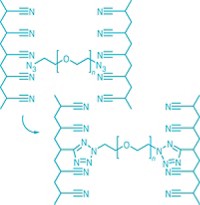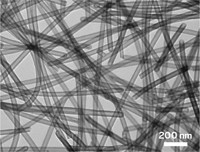Advertisement
Grab your lab coat. Let's get started
Welcome!
Welcome!
Create an account below to get 6 C&EN articles per month, receive newsletters and more - all free.
It seems this is your first time logging in online. Please enter the following information to continue.
As an ACS member you automatically get access to this site. All we need is few more details to create your reading experience.
Not you? Sign in with a different account.
Not you? Sign in with a different account.
ERROR 1
ERROR 1
ERROR 2
ERROR 2
ERROR 2
ERROR 2
ERROR 2
Password and Confirm password must match.
If you have an ACS member number, please enter it here so we can link this account to your membership. (optional)
ERROR 2
ACS values your privacy. By submitting your information, you are gaining access to C&EN and subscribing to our weekly newsletter. We use the information you provide to make your reading experience better, and we will never sell your data to third party members.
Materials
Staying warm, polar bear style
Sweater fashioned from polymer-coated aerogel fibers retains heat
by Bethany Halford
December 21, 2023

Polar bears stay warm in the chilly Arctic, thanks in part to the specialized hairs in their fur. These hairs feature a highly-porous core surrounded by a thick shell—a structure that helps the polar bears retain heat by trapping air and insulating the creatures from the cold. Researchers have now developed a fiber that mimics this structure, using an aerogel core and a stretchable polymer coating. The resulting fibers were knitted into a sweater that keeps its wearer as warm as if they were sporting a down jacket that’s five times thicker.
A team at Zhejiang University led by Hao Bai and Weiwei Gao developed the fibers, but this isn’t the first time this group has found inspiration in polar bear hair. They previously used this strategy to make stealth fabric that traps heat, hiding its wearer from thermal vision cameras. This time, the scientists encapsulated their chitosan aerogel fibers in a layer of elastic thermoplastic polyurethane (Science 2023, DOI: 10.1126/science.adj8013).
“Although the procedure is quite simple, this encapsulating strategy has significantly improved the fiber performance,” Bai says in an email. While typical aerogel fibers are fragile and can only tolerate about 2% strain, the polymer-coated fibers become stretchable up to 1000% strain. The fibers are also washable, dyeable, and maintain their thermal insulation after repeated stretching.
Bai says that figuring out how to coat the fibers, which are fragile, was the most challenging part of the project. The researchers achieved this by freeze-spinning the chitosan aerogel followed by a coating-drying process with thermoplastic polyurethane.
Challenges remain for mass producing such fibers, say Zhizhi Sheng and Xuetong Zhang, who are aerogel fiber experts at the Chinese Academy of Sciences, in a perspective that accompanies the paper (Science 2023, DOI: 10.1126/science.adm8388). The current work uses continuous spinning to create the fibers but relies on batch drying. “A fully continuous process remains elusive,” they say.
Bai agrees that the process isn’t yet scalable. “The raw materials for making our fiber are inexpensive. The main issue now is how to realize mass production to further reduce the cost,” he says.





Join the conversation
Contact the reporter
Submit a Letter to the Editor for publication
Engage with us on Twitter